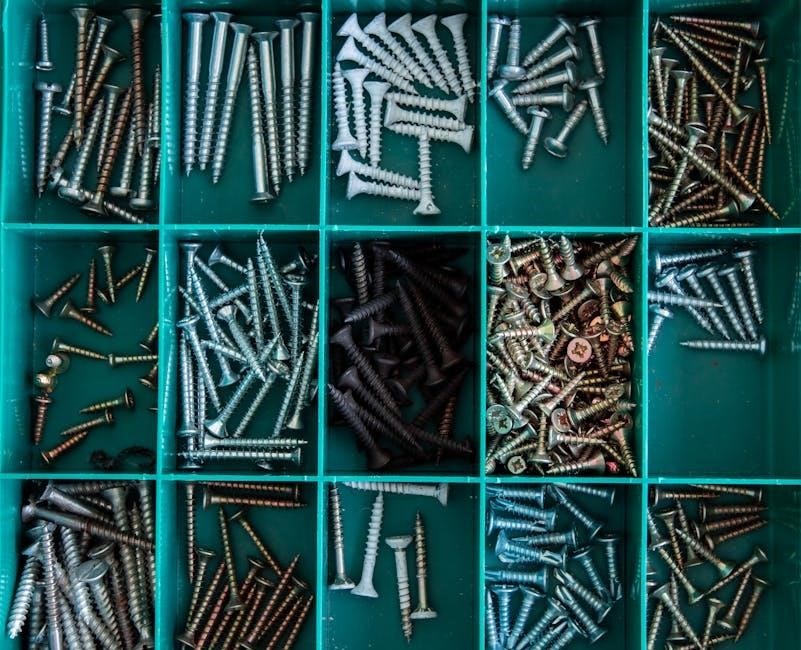QRAE 3 Manual: A Comprehensive Guide
The QRAE 3 manual serves as a comprehensive resource for users, maintainers, and service personnel. It covers everything from basic operation and calibration procedures to troubleshooting and advanced settings for optimal performance.
Overview of the QRAE 3
The QRAE 3 is a versatile multi-gas detector designed for continuous monitoring of toxic and combustible gases. Available in both pumped and diffusion versions, it caters to a wide array of applications. This portable instrument integrates a man-down alarm for enhanced worker safety. Its wireless capabilities provide real-time access to instrument readings, allowing safety officers to remotely monitor conditions and respond promptly to alarms. The QRAE 3 supports various field-replaceable electrochemical and combustible sensors, making it adaptable to different environments. This manual is essential for understanding its functionalities and ensuring proper usage.

Key Features and Benefits
The QRAE 3 offers multi-gas detection, pumped/diffusion options, and wireless connectivity. These features enhance safety by enabling real-time monitoring, adaptability to various environments, and prompt response to hazardous conditions, improving overall worker protection.
Multi-Gas Detection Capabilities
The QRAE 3 excels in multi-gas detection, offering simultaneous monitoring of up to four gases, including combustibles, oxygen, and various toxic gases like hydrogen sulfide (H2S), carbon monoxide (CO), and hydrogen cyanide (HCN). This comprehensive capability ensures continuous assessment of potential hazards in diverse industrial environments. Equipped with field-replaceable electrochemical and combustible sensors, the QRAE 3 can be tailored to fit specific application needs. The instrument’s ability to detect multiple threats elevates worker protection by providing a broader awareness of potential dangers, which is crucial in rapidly changing environments where multiple gas hazards may be present.
Pumped and Diffusion Versions
The QRAE 3 is available in both pumped and diffusion versions, providing flexibility to suit different monitoring requirements. The pumped version actively draws air samples into the device, enabling rapid detection and response, especially in confined spaces or areas with limited ventilation. Conversely, the diffusion version relies on natural gas diffusion, offering a more passive and continuous monitoring approach. This makes it ideal for personal monitoring, where constant awareness of ambient conditions is critical. The choice between pumped and diffusion models depends on the specific application and the need for active versus passive gas detection.
Wireless Connectivity for Real-Time Monitoring
The QRAE 3 elevates worker safety through its wireless connectivity, enabling real-time monitoring and data access. With integrated wireless capabilities, safety officers can remotely view instrument readings, alarm statuses, and datalogging information. This ensures prompt response to hazardous conditions and facilitates informed decision-making. The wireless feature enhances situational awareness, allowing for proactive intervention and improved worker protection. Data can be transmitted to a central monitoring system for comprehensive analysis and reporting, promoting a safer work environment. Wireless connectivity streamlines safety management, providing immediate insights into potential hazards and facilitating efficient incident response.

User Interface and Operation
The QRAE 3 features a user-friendly interface, designed for intuitive operation and efficient gas monitoring. Its clear display, simple controls, and alarm indicators ensure ease of use in the field.
Display, LEDs, Alarm Buzzer, and Keys
The QRAE 3’s user interface consists of several key components that provide critical information and feedback to the user. The display screen shows real-time gas readings, battery level, and alarm status. The LEDs offer visual alerts for different alarm conditions, such as low or high gas concentrations, while the audible alarm buzzer provides an immediate alert. The device is equipped with keys that allow the user to navigate the menu, acknowledge alarms, and perform basic functions. These elements work together to ensure the operator is informed of the surrounding environment.
Navigating the Menu System
The QRAE 3 features an intuitive menu system that allows users to access various settings and functions. To navigate, use the designated keys to scroll through the menu options displayed on the screen. Selecting an option typically involves pressing a specific key for confirmation. The menu structure includes options for calibration, alarm settings, datalogging configuration, and radio settings for wireless models. Understanding the menu system is essential for customizing the QRAE 3 to specific monitoring needs and ensuring accurate data collection. Familiarizing yourself with these functions will optimize the effectiveness of the device.

Calibration and Maintenance
Proper calibration and regular maintenance are crucial for ensuring the QRAE 3 provides accurate and reliable gas detection. These procedures help to maintain sensor performance and extend the lifespan of the instrument.
Calibration Procedures
To calibrate the QRAE 3, access the calibration menu and follow the on-screen prompts. Attach the calibration adapter and apply the appropriate calibration gas, ensuring the correct concentration for each sensor. The QRAE 3 supports both automatic and manual calibration. For automatic calibration, the instrument will adjust the sensor readings based on the applied gas concentration. Manual calibration allows for fine-tuning of sensor responses. Always use certified calibration gas and adhere to the recommended calibration frequency outlined in the user manual to maintain accuracy and reliability. Proper calibration ensures worker safety.
Sensor Replacement and Maintenance
Sensor replacement is crucial for maintaining the QRAE 3’s accuracy. Ensure the device is powered off before attempting any sensor replacement. Refer to the user manual for proper sensor removal and installation techniques. When replacing sensors, handle them carefully to avoid damage. Regularly inspect sensors for signs of wear, corrosion, or contamination. Clean the exterior of the QRAE 3 with a soft, damp cloth. Avoid using solvents or abrasive cleaners. Store the QRAE 3 in a cool, dry place when not in use. Regular maintenance ensures optimal performance and extends the life of the instrument. Proper storage is essential.

Troubleshooting and Technical Support
This section addresses common issues, providing solutions and guidance. For further assistance, consult the user manual or contact technical support for expert help and resources regarding your QRAE 3.
Common Issues and Solutions
Addressing common problems ensures efficient operation. Typical issues include sensor errors, calibration failures, alarm malfunctions, and connectivity problems. Solutions involve checking sensor health, verifying calibration gas, adjusting alarm settings, and confirming wireless connections. Battery life is also a common concern; ensure proper charging. Consult the QRAE 3 user manual for detailed troubleshooting steps. If problems persist, contacting technical support is recommended for advanced diagnostics. Regularly inspect the device for physical damage. Always refer to the manual for specific error codes and recommended actions to maintain optimal performance and safety in the field.
Accessing Technical Support and Resources
When troubleshooting the QRAE 3, numerous resources are available. The primary resource is the user manual, providing comprehensive guidance on operation and maintenance. Online, RAE Systems offers support pages with FAQs, software downloads, and troubleshooting guides. Technical support can be reached via phone or email for personalized assistance. Ensure to have the device’s model and serial number ready for efficient support. Training videos and webinars are available for in-depth understanding. Local distributors and service centers provide regional support. Forums and online communities can offer peer assistance. Utilizing these resources ensures timely resolution of issues and optimal device performance, maximizing safety and efficiency.
Applications and Industries
The QRAE 3 is versatile for various sectors, including oil and gas, construction, and fire services. It ensures worker safety by monitoring hazardous gases in diverse environments, making it indispensable.
Suitable Applications for QRAE 3
The QRAE 3 is designed for various applications, providing safety in hazardous environments. It is commonly used in industries such as oil and gas, wastewater treatment, and chemical plants, where the risk of exposure to toxic gases is high. Fire services and emergency response teams also rely on the QRAE 3 for its rapid and accurate gas detection capabilities during incidents.
Construction sites, confined spaces, and industrial facilities benefit from the QRAE 3’s ability to monitor multiple gases simultaneously, ensuring worker protection. Its wireless connectivity allows real-time monitoring by safety officers.


